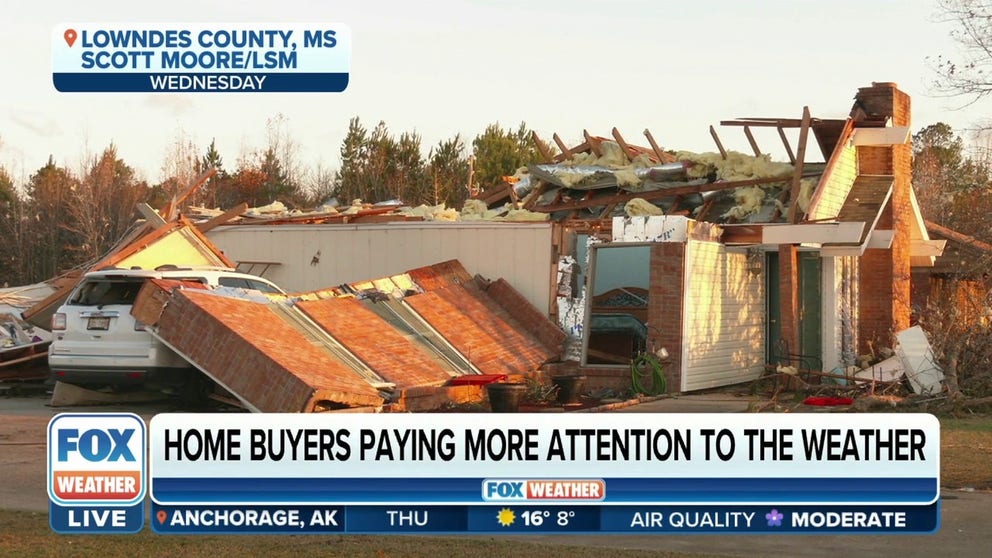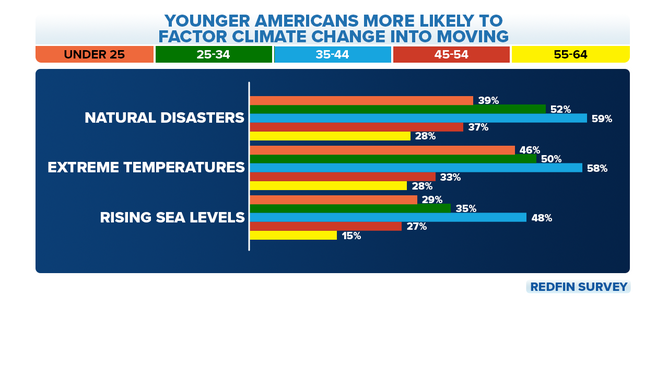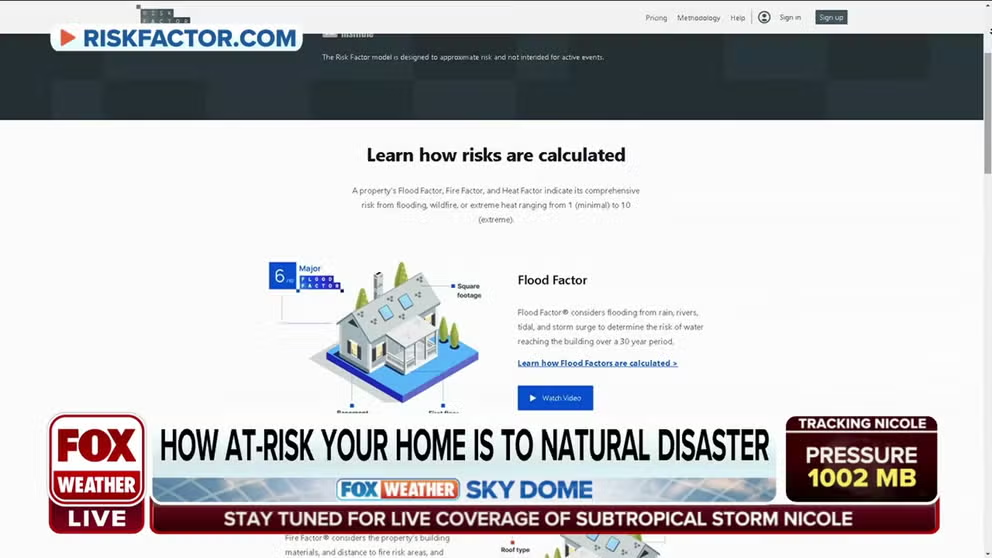Extreme weather becoming a factor in where Americans choose to live
A report shows that over 60% of Americans that are planning to move in the next year are reluctant to move to areas with natural disaster-prone areas or areas that experience extreme weather and sea level rise.
Climate migrants: Extreme weather impacting where people choose to live
Extreme weather increasingly factors into where Americans move. Tulane University's Jesse Keenan talks about climate migrants.
Migration has been a reality since the beginning of time. Animals migrate seasonally to follow their food source and water. Even ancient mankind migrated following the animals, their food source.
In this age of grocery stores and indoor plumbing, you would think that migrating humans are a thing of the past, but real estate analysts say differently, thanks to extreme weather.
Climate migration is becoming more prevalent as homes become more expensive, borrowing money more expensive, and insurance harder to come by in some areas.
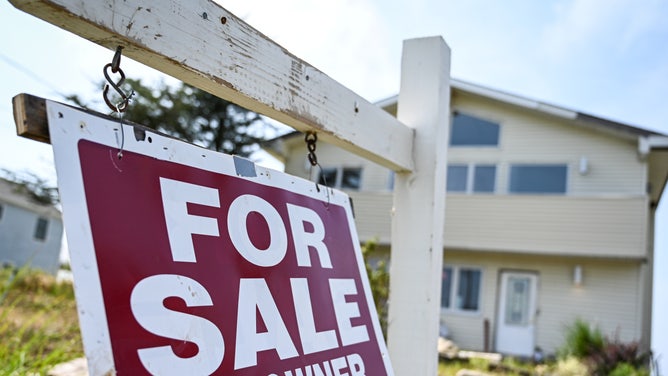
Mastic, N.Y.: For Sale sign by owner sign hangs in front of a house in Mastic, New York, on January 14, 2018. (Photo by Steve Pfost/Newsday RM via Getty Images)
(Steve Pfost/Newsday RM / Getty Images)
"All of these costs associated with climate change are actually becoming a real drag on not only our economy but particular areas that are, let's say, high-risk areas," Jesse Keenan, professor of sustainable real estate at Tulane University told FOX Weather.
"Mortgages more expensive, rents become more expensive, uninsured losses: These are all things that just add a cost burden in America, where we already live with a tremendous lack of affordability in our housing stock," he continued.
Almost half of Americans who plan to move it the next year say that recent natural disasters were a factor. Real estate firm Redfin surveyed 2,000 residents in February 2021, and about 30% planned to move.
5 DISASTERS THAT ARE MORE LIKELY TO IMPACT YOU THAN WINNING THE LOTTERY

A survey found that impacts of climate change are now factors in why American's move.
(Redfin survey / FOX Weather)
About half of those surveyed said extreme temperatures, and 36% said rising sea levels were a factor in their move.
"People move for a lot of different reasons. They move because of better job opportunities. They move better schools, be closer to family," said Keenan. "We now know that climate and extreme weather are one of these many factors that are shaping where people live and how they want to invest in future communities."
Almost 80% of survey respondents said they are hesitant to buy homes in areas with climate risk. Even if the area facing risk was more affordable, 24% to 35% of people said they still wouldn’t move there.
GULF COAST STATES FOUND TO BE AMONG MOST VULNERABLE TO BILLION-DOLLAR DISASTERS
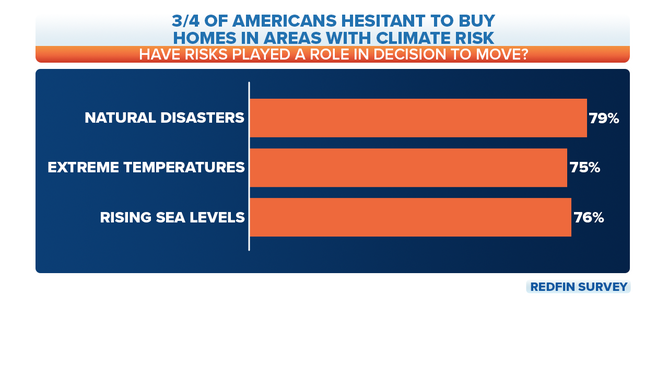
No matter how much they saved, a vast majority of Americans wouldn't buy a home with climate risk.
(Redfin survey / FOX Weather)
Age makes a difference. Almost 60% of those between 35 and 44 years old said climate change heavily influences their decisions. But only 15% of those 55 to 64-year-old would factor rising sea levels into their decision. Extreme temperatures and the increasing frequency of natural disaster impact only a quarter of those in the older age range.
Midwesterners were the least likely to consider natural disasters, extreme temperatures and rising sea levels into a move. About half of all respondents from the South, West and Northeast considered climate change a factor.
MAJORITY OF AMERICANS FEAR LOSING THEIR HOME TO EXTREME WEATHER
Another Redfin survey showed that 58% of Americans had hardened their homes against climate change, saying that about a third spent over $5,000 dollars.
Of those who responded, 26% addressed extreme heat, 22% extreme cold and 22% flooding. Only 8% to 16% of people invested in battling drought, rising sea levels, wildfires, earthquakes, tornadoes, air quality and tropical storms
Almost a third of respondents didn’t have a homeowners insurance policy covering natural disasters, which may or may not be brought on by climate change. Over a third of people purchased flood insurance. Only a quarter of homeowners had fire insurance due to wildfires.
DO YOU HAVE FLOOD INSURANCE? DO YOU NEED IT?
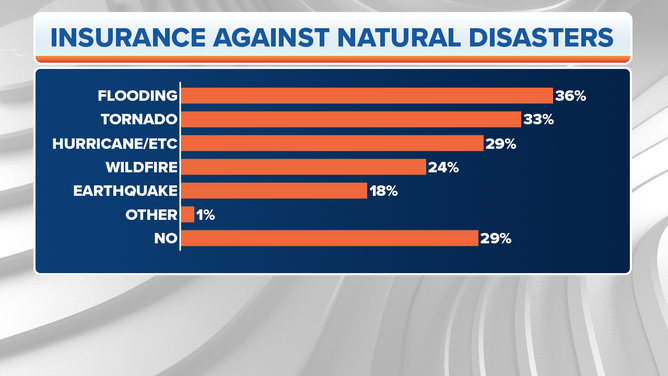
Americans were asked if they had a homeowner's insurance policy covering any of these natural disasters.
(Redfin survey, August 2022 / FOX Weather)
Is my home at risk with climate change?
There are so many unknowns in a new neighborhood. Learning the threat of climate change on a potential new home seems overwhelming.
Get help, says Keenan. Firms like Climate Check assess ‘forward-looking’ risk property by property.
"Let's say you plan on being in the home for 30 years. The average mortgage in America is for 30 years," explained Keegan. "It will provide some assessment of forest fire risks, sea level rise flooding, a variety of different hazards and perils so that you when you're shopping for property on Redfin, for instance, you can use climate check to assess that underlying risk."
HOW TO WATCH FOX WEATHER ON TV
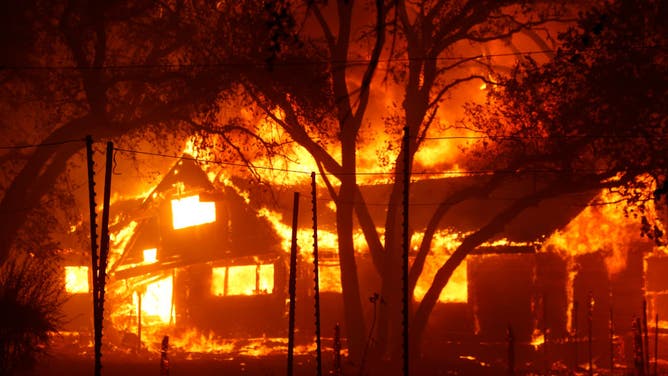
The Kincade fire in Sonoma County destroyed 374 structures including this one.
(Karl Mondon/MediaNews Group/The Mercury News via Getty Images / Getty Images)
RiskFactor.com by First Street Foundation is another online risk assessment tool for wildfire, flooding and extreme heat.
"The way that we calculate flood risk, for example, is we take a look at possible hurricane scenarios over thousands of different potential tracks that hurricanes can come, Matthew Eby, founder of First Street Foundation, told FOX Weather.
"We look at sea level rise. We look at sea surface temperatures, atmospheric temperatures, and then we create a hydraulic model that tells us the difference between every single home across the country," continued Eby. "So if your home is elevated versus another home, it will be at less risk than the home down the street."
HURRICANE IAN EXPOSES COMPLICATED PATH AHEAD FOR INSURANCE CLAIMS
New First Street Foundation helps determine how at-risk your home is to natural disaster
New First Street Foundation climate risk assessment tool offers homeowners industry standard data and insights for free.
The wildfire risk tool looks at a home’s elevation, building materials and proximity to woodlands. Banks use the information as well as insurance companies.
"These things aren't perfect. Their estimates, their projections are based on best available science, and they will get better with time," said Keenan. "But it gives consumers a ballpark estimate of what these risks may be in the future so that we're not walking into these major life decisions completely blind."
Hurricane Ian alone caused an estimated $41 to $70 billion dollars of property loss. Out of that, flood loss cost the uninsured $10 to $17 billion dollars, according to CoreLogic.
